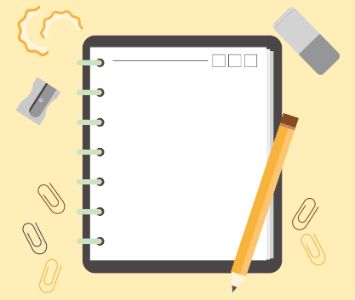
Every child is unique. Does your little one learn better through visualizing concepts or by creating a melody out of the most boring lessons? Do they like working in groups or do they work better alone?
Everyone has different learning preferences. Some children have a visual learning style while others may have auditory or verbal learning preferences. Theory of Multiple Intelligences claims that each individual falls into one of the eight types of learning styles.
Here are 8 Types of Learning Styles to help you recognize which learning style works better for your child.
Now let’s go through each of these styles in details

Visual learning requires the use of visual aid including charts, graphs, images, and diagrams, etc to facilitate the learning process. Visual learners learn better through visualizing.
Visual learning might be the best method for your child if:
You can help your little visual learner make the learning process fun by:
Visual learners grow up to become great Artists and Architects.

If your child responds better to speech and sound then he may be an aural learner. Aural learning constitutes utilizing auditory aid like music, rhythms or speech to help with the learning process. Aural learners are often musicians or performers.
Your child might be an aural learner if:
You can make learning easier and fun for your young aural learner by converting the study material into jingles or melodies.
Aural learners grow up to be fantastic Musicians.

Verbal learners are usually avid readers or writers. Verbal learners retain information through listening, memorization, reading and writing. If it sounds like your child, then he may be a verbal learner.
Here are some other clues that your child might be a verbal learner:
You can help your child learn better by:
Verbal learners tend to become excellent Writers, Lawyers and Teachers when they grow up.
Physical learners learn better through practical experience. Physical learners are great at body movement and are excellent performers. Your child might be a physical learner if he likes to get hands-on experience of whatever he is learning.
Physical learners tend to:
Your child can learn better by:
Physical learners grow up to be magnificent Actors, Sculptors and Dancers.
Does your child often ask you “Why”? Do they want to know the logical reasoning behind everything? Then your child may be a logical learner. Logical learners are great at mathematics and they enjoy brain teasing exercises in their free time.
Logical learners love to:
Your logical learner can learn better by:
Logical learners grow up to be brilliant Scientists, Mathematicians and Engineers.
Social learning constitutes learning through group activities and interacting with peers. Social learners learn better through understanding and relating to others. Social learners perform best in group projects.
Your little one might be a social learner if:
Social learners learn better through:
Social learners turn out to be excellent Psychologists, Therapists and Counselors as they are great at comprehending the emotions and desires of others.
Does your child like to be on his own? Do they enjoy their own company and learn better on their own? If yes, then your child may be a solitary learner. Solitary learners prefer to work alone and are highly self-motivated.
Solitary learners tend to:
Solitary learners grow up to become Philosophers and Writers due to their tremendous self-awareness and ability to work alone.
Naturalistic learners are more in tune with nature and love to explore other species. These learners are nurturers and highly aware of their environment. Naturalistic learning is the most recent addition to Gardner’s Theory of Learning and it was met with a lot of criticism.
Naturalistic learners love to:
Naturalistic learners are most likely to become Gardeners, Biologists, and Conversationalists.
Which learning style suits your child the best? Have something to add? Tell us in the comments below!